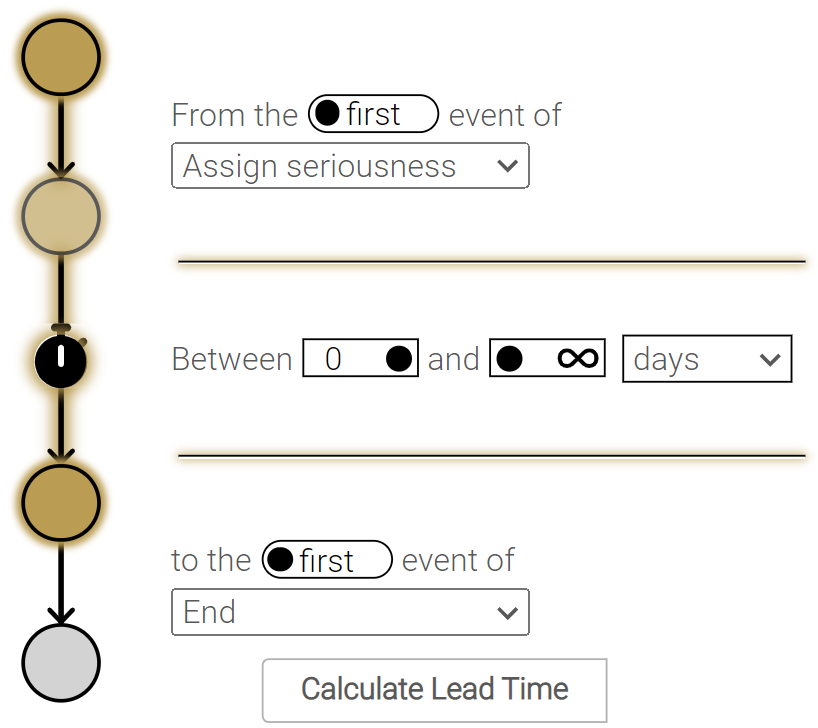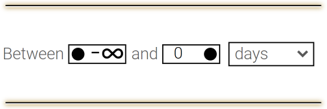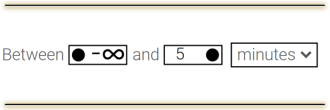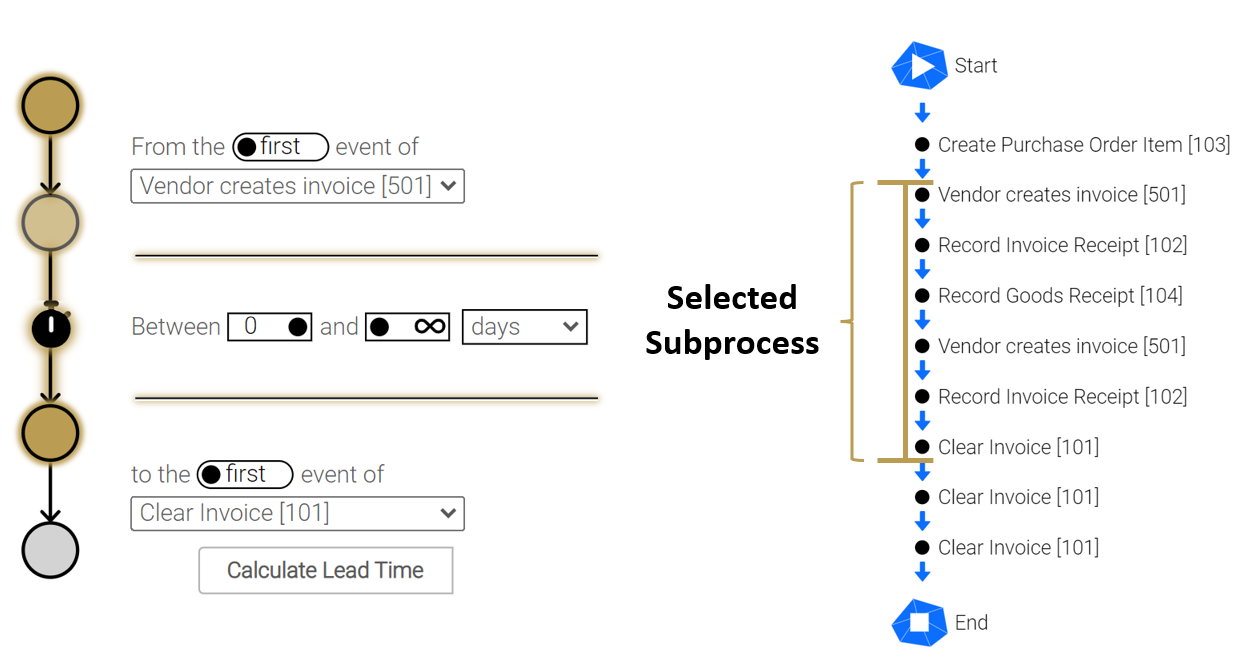|
LeadTimeFilter |
Scroll Previous Topic Top Next Topic More |

Ad hoc lead time analysis_ basic
The LeadTimeFilter helps you define a subprocess to see it‘s lead time. In addition, you can filter the results to focus on specific lead times, such as those where the lead time is greater than 40 days, for example. The Lead Time Filter is found on the Ad Hoc Lead Time Analysis sheet.
Filter a lead time:
To further your analysis, you can choose to filter only those subprocesses that have a certain lead time.
1.Define the starting activity and the ending activity of the subprocess you want to analyse further. Just use the dropdown menus to select the starting and ending activities.
2.Choose the first or last occurance of each activity. This is helpful since sometimes there are multiple occurances of each activity. Switch between the first or last occurance with the slider above each dropdown menu. This is also represented by the timeline on the left side. Once you‘ve defined the starting and ending activities, all cases will be filtered which include the starting and ending activities. It doesn‘t matter what activities occur in between.
3.Filter only those subprocesses that have a certain lead time. You could always choose infinity or negative infinity as an option here just by clicking the dot, which causes the slider to switch between a number value and infinity. Click the number to enter any value you choose. You can also choose between days, hours, or minutes in the middle dropdown box. The filter is defaulted to all positive lead times, so from 0 to infinity.
Here are some examples how to use the LeadTimeFilter:
properties of the subprocceses |
Example |
All subprocess lead times between 40 and 100 days |
 |
All positive subprocess lead times |
 |
All negative subprocess lead times (which is possible) |
 |
All subprocess lead times less than 5 minutes: |
 |
Last event of "Vendor creates Invoice" to first event of "Clear Invoice" with all positive lead times |
|
First event of "Vendor creates Invoice" to first event of "Clear Invoice" with all positive lead times |
 |
